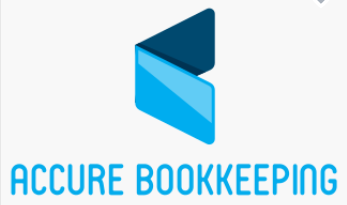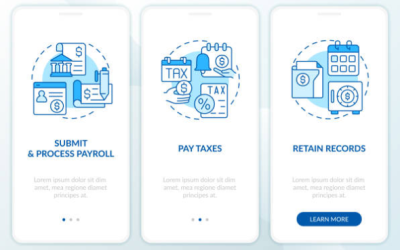The repo rate, short for repurchase rate, is a key tool used by central banks (such as the Federal Reserve in the U.S. or the Reserve Bank of India) to control inflation and stimulate economic growth. When the repo rate drops, it signals that borrowing money is becoming cheaper for banks, and this usually trickles down to consumers and businesses.
While a drop in the repo rate often sounds like good news, it’s essential to understand how it can impact your business in both the short and long term. In this blog, we’ll explore how a decrease in the repo rate affects various aspects of your business and how you can prepare to make the most of these changes.
What Exactly Is the Repo Rate?
Before diving into the effects on your business, let’s clarify what the repo rate is. The repo rate is the interest rate at which commercial banks borrow money from the central bank. When the central bank lowers this rate, it encourages banks to borrow more, with the aim of increasing the money supply in the economy. This, in turn, makes loans and credit cheaper for businesses and consumers.
How a Drop in the Repo Rate Affects Your Business
1. Cheaper Borrowing Costs:
One of the immediate impacts of a repo rate cut is that borrowing money becomes more affordable. Banks pass on the lower interest rates to businesses through cheaper loans. If your business needs financing for expansion, new equipment, or working capital, now may be the time to take out that loan.
Opportunity: You can take advantage of cheaper credit to invest in growth opportunities—whether that’s upgrading equipment, expanding your product line, or even purchasing real estate. A lower interest rate means lower monthly payments, easing your cash flow.
2. Boost in Consumer Spending:
When the repo rate drops, consumers can also benefit from lower interest rates on their loans, mortgages, and credit cards. This generally leads to an increase in disposable income and higher consumer spending. If your business is consumer-facing, especially in industries like retail, hospitality, or real estate, you could see a rise in sales.
Opportunity: Increased consumer spending means an opportunity to boost sales. Now might be the perfect time to run targeted promotions, launch new products, or invest in customer acquisition strategies to take advantage of heightened demand.
3. Lower Savings Interest Rates:
A drop in the repo rate often leads to lower interest rates on savings accounts. For consumers, this might discourage saving and encourage spending. However, for businesses, if you rely on interest from savings as part of your financial strategy, your returns may be lower.
Impact: While this may not have a major impact on most businesses, companies that hold significant cash reserves should be aware of lower interest earnings.
4. Potential for Inflation: While a repo rate cut can stimulate spending and borrowing, it can also lead to inflation if demand outstrips supply. If inflation rises too quickly, it could erode your business’s purchasing power, as the cost of goods and services increases.
Impact: Keep an eye on inflation trends following a rate cut. If inflation rises, you might need to adjust your pricing strategy, renegotiate supplier contracts, or streamline operations to maintain profitability.
5. Changes in Forex Rates:
For businesses that import or export goods, a drop in the repo rate can affect foreign exchange rates. A lower repo rate could lead to a weaker domestic currency, which could make imports more expensive but increase the competitiveness of exports.
Impact: If you’re an importer, rising import costs could eat into your profit margins. If you’re an exporter, you could benefit from the favorable exchange rate and attract more international business.
How to Prepare Your Business for a Drop in the Repo Rate
Understanding how a drop in the repo rate affects your business is one thing, but preparing for it can help you fully capitalize on the opportunities or shield yourself from any potential downsides. Here’s how:
1. Evaluate Your Financing Options
A lower repo rate means lower borrowing costs, which could be a great time to reconsider your financing options. If you’ve been thinking about expanding, now might be the ideal time to take on a loan, as it will cost you less in interest over time.
Tip: Shop around for the best loan deals, as banks will likely offer competitive rates during this time. Consider refinancing any high-interest loans you currently have to take advantage of the new, lower rates.
2. Increase Investment in Growth Areas
If you’re already in a stable financial position, use the reduced borrowing costs to fuel growth. Whether it’s investing in technology, hiring new staff, or expanding into new markets, take advantage of cheaper credit to grow your business.
Tip: Plan your business expansion strategically by conducting market research to ensure there’s demand for the growth initiatives you’re considering.
3. Watch for Inflationary Pressures
As mentioned earlier, a drop in the repo rate can sometimes lead to inflation. If inflation rises, your costs could increase. It’s essential to monitor prices for raw materials, services, and labor to ensure you’re not caught off guard by rising expenses.
Tip: Prepare by locking in prices with long-term supplier contracts where possible. You might also want to review your pricing strategy to ensure your margins aren’t eroded by rising costs.
4. Reassess Your Savings Strategy
With lower interest rates on savings, it might be a good idea to reassess how your business handles cash reserves. If your current savings accounts are yielding less than before, consider other financial instruments or investments that offer higher returns.
Tip: Speak with a financial advisor to explore alternatives, such as short-term bonds or dividend-paying stocks, that can provide better returns during periods of low interest rates.
5. Stay Agile with Forex Rates
For businesses that deal with foreign currencies, keep a close eye on forex markets when the repo rate drops. If you’re importing, higher import costs due to a weaker currency might hurt your bottom line. If you’re exporting, you could have an advantage in international markets.
Tip: Hedge against currency fluctuations by locking in exchange rates through forward contracts or using currency options to protect your business from unfavorable shifts.
Conclusion
A drop in the repo rate presents both opportunities and risks for businesses. While cheaper loans and increased consumer spending can provide significant growth opportunities, inflation and lower returns on savings are potential downsides. To fully capitalize on a lower repo rate, businesses need to be strategic in their approach—evaluating their financing options, preparing for inflation, and staying agile in the face of changing market dynamics.
By staying informed and preparing accordingly, you can ensure that your business not only survives but thrives in a changing economic landscape. Keep an eye on central bank policies, stay proactive with financial planning, and continuously adapt your business strategies to maximize the benefits of a lower repo rate.




0 Comments